Clancy Tucker's Blog, page 196
February 20, 2017
21 February 2017 - Advice vs. Advise

ADVICE vs. ADVISE
G'day folks,
It’s no wonder that advice and advise are often confused; they are used in similar contexts and separated by just one letter, but that letter signals important distinctions to keep in mind when using the terms. So what are the differences between the two?
Advise is a verb meaning “to give counsel to; offer an opinion or suggestion as worth following.” Adviceis a noun meaning “an opinion or recommendation offered as a guide to action, conduct, etc.” The -ice ending of advice is pronounced like “ice,” while the -ise ending of advise is pronounced like the “-ize” in “realize.”

Some of the confusion surrounding these terms may be attributable to the subtle spelling differences, particularly when it comes the use of c versus s, between British and American English. For instance, in British English, the words practice and practise are different parts of speech (noun and verb, respectively).
Meanwhile, in American English, the word practicedoubles as both a noun and a verb. While the absence of a second spelling might lead you to believe American English prefers the -ce ending, English speakers in the United States use defense and offense where the British use defence and offence. Thankfully, regardless of the variety of English you’re dealing with, advice is always a noun and adviseis always a verb.

If you have trouble remembering the difference between the two, it might help to keep in mind that advice and advise operate much like device and devise. You devise a plan, but to do so, you might use a device. Similarly, if you advise a friend, you are giving her a piece of advice.

Clancy' comment: I bet you are glad I posted these two words.
I'm ...


Published on February 20, 2017 12:24
February 19, 2017
20 February 2017 - AMAZING QUOTES

AMAZING QUOTES
G'day folks,
Time for some more quotes - humorous and serious, so brace yourself.


















Clancy's comment: Some goodies here today. Just got to put them into action. That's all. simple, eh?
I'm ...
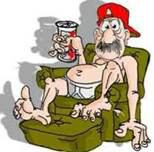

Published on February 19, 2017 12:39
February 18, 2017
19 February 2017 - JOHN HARRISON
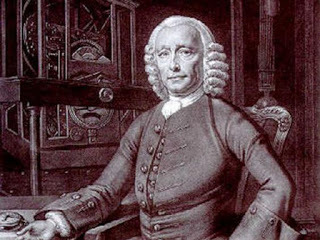
JOHN HARRISON
G'day folks,
John Harrison was a self-educated English carpenter and clock maker who invented the marine chronometer, a long-sought after device for solving the "longitude problem" - a practical method of calculating longitude while at sea.
John Harrison was born in Foulby, near Wakefield in West Yorkshire. His father worked as a carpenter, and John followed his father into the carpentry business. He also developed a passion for music and learning how clocks work. It was said, as a youngster, he would take clocks apart and put them back together.
Harrison combined his skills of being a carpenter with making new clocks. Later clocks also added extra features, such as the grasshopper escapement to improve the quality of clocks. The grasshopper escapement provided a controlled and step by set process for releasing the energy of the clock. His pendulum clocks are considered to be some of the most accurate clocks of the age.
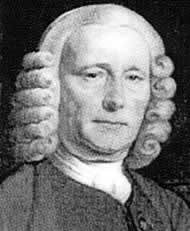
Although a good inventor, he was less skilled at dealing with people, Harrison was helped by George Graham and Edmond Halley, who helped finance, encourage and advocate on behalf of Harrison.
His most important invention was finding a solution to the issue of longitude. For a long time, the ability to know a ship’s longitude position had not been found. Numerous attempts had been made, but none successful. The ability to know longitude was essential to the safe navigation of ships. The problem was considered so important, Parliament offered a £20,000 reward for the first person who could provide a solution. Sir Isaac Newton himself had doubted whether such a device could be created.
Harrison’s invention was to develop a clock able to tolerate fluctuations in temperature and air pressure, and could keep very exact time for a long time. It took Harrison five years to develop his first sea clock (H1). It incorporated roller pinions, wooden wheels and two dumbbell balances linked together. After receiving approval of Royal Society, it was given its first sea trial on a route to Portugal. The tests proved very favourable, with Harrison’s clock accurately predicting longitude (compared to the old methods which were 60 miles out.) However, this was not enough for the Parliamentary prize which required use on transatlantic routes.
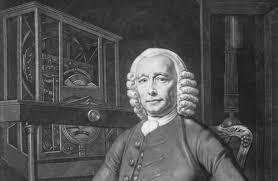
Over the next few years, he built different versions, improving on the design. Changing bar balances to circular balances (not affected by the rolling action of the sea). His next models, H2 and H3 were never entirely successful, and around 1750 Harrison abandoned his Sea Clock, and started working on a smaller sea watch.
Incorporating elements of other watches, built by Thomas Judge, Harrison worked on a Marine watch (H4). Although taking another six years to build, Harrison was able to prove successfully that by using this watch Longitude could be accurately measured. On the first trial to Jamaica, the Marine Watch proved very accurate. However, the Parliament board kept back the prize, arguing that it might have been due to good luck. Harrison had to do other trials, and in the meantime came up with a second sea watch H5. Again, it proved reliable, but again Parliament withheld the full prize. Enlisting the help of the King George III, Harrison was eventually award £8,750 – though by that time he was 80 years old. The full prize was never awarded to anyone.
Harrison’s lifework had been completed after years of hard work on improving the design. It was soon widely used. For example, fellow Yorkshireman Captain James Cook, used a copy of H4 on his second and third journeys. Despite their high cost, they proved very useful for safer navigation.
Harrison died at the ripe age of 83, and was buried in Hampstead. Harrison’s device was later improved upon by John Arnold, who enabled the production of cheaper Chronometer’s – enabling their widespread use in shipping.

Clancy's comment: Amazing, eh? Another inventive man.
I'm ...

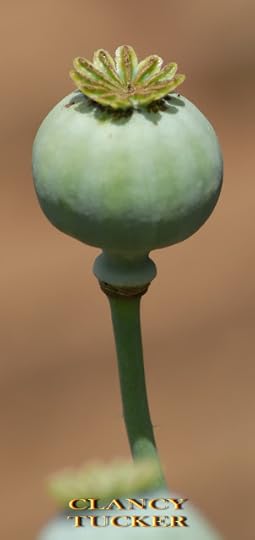
Published on February 18, 2017 12:19
February 17, 2017
18 February 2017 - COOL ANIMAL PICTURES

COOL ANIMAL PICTURES
G'day folks,
Time to check out some of the others who share earth with us.









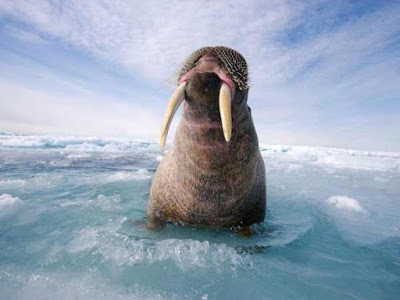

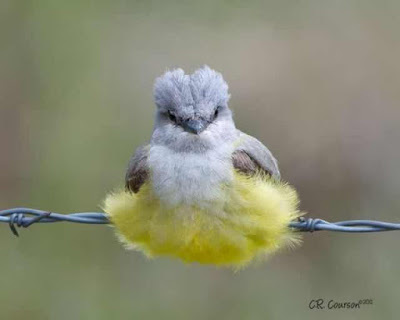





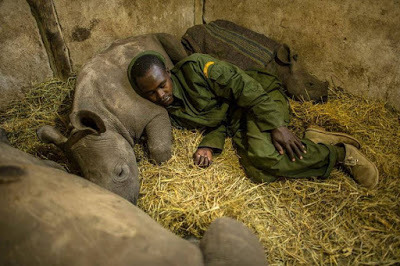





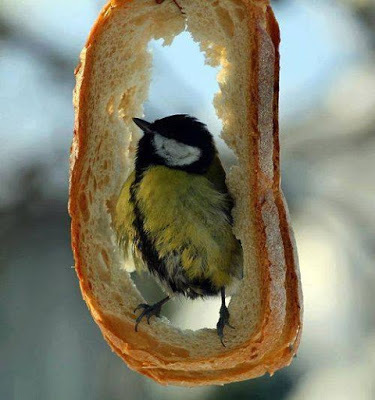


Clancy's comment: There are some stunning shots here. Loved the little lamb peeking around the corner.
I'm ...


Published on February 17, 2017 12:09
February 16, 2017
17 February 2017 - What do a.m. and p.m. stand for?

What do a.m. and p.m. stand for? G'day folks,Ever wondered about this?

Most English speakers know that a.m. refers to the hours from midnight and noon, and p.m.to the hours from noon and midnight. But what do these ubiquitous abbreviations stand for?
The term we associate with the morning, a.m., is an abbreviation the Latin phrase ante merīdiem meaning “before midday”; p.m. is an abbreviation of post merīdiem, meaning—you guessed it—“after midday.”
These two terms help keep ambiguity at bay in the 12-hour time system. There is a third, lesser-known abbreviation in this system: m. from the Latin merīdiēs meaning “midday” means noon. However, m. is rarely used and might confuse readers or listeners should you casually drop it into conversation or insert it into your writing; noon is conventionally expressed as 12 p.m. or 12:00 p.m. and midnight as 12 a.m. or 12:00 a.m.

In formal writing, it is best to lowercase both a.m. and p.m. and retain the periods (as opposed to writing them AM/PM or am/pm); however, should you choose to use a different format, the most important rule is to be consistent throughout your piece.
Note that when a.m. or p.m.end a sentence, as in The train is arriving at 10 p.m., it is not necessary to place an additional period at the end. And, for our final writing tip, since these abbreviations specify an hour’s relation to noon, it is not necessary to use morning, evening, night, or o’clockwith them.

Clancy's comment: There ya go.
I'm ...


Published on February 16, 2017 12:23
February 15, 2017
16 February 2017 - THE ALLIGATOR

THE ALLIGATOR
G'day folks,
Welcome to some facts about the alligator. An alligator is a crocodilian in the genus Alligator of the family Alligatoridae. The two living species are the American alligator and the Chinese alligator. In addition, several extinct species of alligator are known from fossil remains.




Amazing Facts About the AlligatorThere are two living species of alligator in the world: the American Alligator (Alligator mississippiensis) and the Chinese Alligator (Alligator sinensis).The alligator is often described as “a living fossil” given that it has evolved little over the past 65 million years.Female alligators construct nests made of vegetation and mud. They can lay over 50 eggs in a single season. They are amongst the most attentive parents in the reptile world, tending to remain with their young, caring for them for as long as three years.The sex of a newborn alligator is determined by the temperature of the nest. Incubation temperatures of 30 Celsius or below will produce females, whereas 34 Celsius or above will produce males.Although often confused with crocodiles, alligators can be distinguished from crocodiles by their broad u-shaped snouts; comparing them with crocodiles’ v-shaped snouts.Although seriously endangered in the 1950’s the American Alligator’s numbers have grown since they came under legal protection. Being killed for their skins was the major issue.Alligators can have up to 80 teeth at any given time. New teeth grow to replace worn ones and throughout a lifetime an alligator can have between 2,000 and 3,000 teeth.In North American shamanism, alligators are symbols of adaptability and survival.Alligators are opportunistic feeders who ambush their prey rather than chase them. They can reach 30 miles per hour in a short burst, however cannot maintain a high speed.The alligator became the official state reptile of Florida in 1987.

Clancy's comment: Wow, check out those teeth.
I'm ...
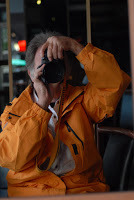

Published on February 15, 2017 12:51
February 14, 2017
15 February 2017 - WHO INVENTED FROZEN FOOD?

WHO INVENTED FROZEN FOOD?
G'day folks,
Have you ever pondered this question? Wonder no more ...
From packages of waffles to bags of peas, the items found in the frozen food section of grocery stores today owe their existence, in part, to Clarence Birdseye, who in the 1920s developed a quick-freezing process that launched the modern frozen-food industry. Between 1912 and 1917, Birdseye, a Brooklyn native, lived in Labrador, where he worked briefly on a hospital ship then started a fox-breeding venture. It was during this period that he learned about the customs of the indigenous Inuit, who would go ice-fishing then let their catch immediately freeze in the frigid air. When this frozen fish, which was left out in the cold, eventually was cooked, it tasted fresh.

After returning to America, Birdseye took a job in 1920 with a lobbying group for commercial fisherman. In this role, he discovered that large amounts of freshly caught fish spoiled before making it to stores. Recalling the flash freezing he’d done in Labrador, Birdseye believed he could apply this concept to commercially frozen food and in 1923 founded a frozen-fish company in New York. At the time, commercially frozen food had been available for half a century; however, it was unpopular with consumers because it lost its flavor and texture when thawed (it was being frozen too slowly, causing large ice crystals to form, which adversely affected the food’s cellular structure).

Birdseye’s company quickly ran out of money but in the mid-1920s he relocated to Gloucester, Massachusetts, a center of the fishing industry, and established a new business, General Seafoods. He developed equipment and packaging and patented his freezing process; however, he continued to face a number of hurdles, including a lack of insulated vehicles to transport his products to stores and the fact that many retailers didn’t have sufficiently refrigerated display cases.

Nevertheless, the Postum Cereal Company (maker of Grape-Nuts and other food items) saw the potential in Birdseye’s innovations and acquired his business in 1929. Postum was renamed General Foods and included the Birds Eye Frosted Food Division. Frozen food still took time to catch on. Large numbers of Americans first tasted frozen food in the 1940s, during World War II, when a shortage of tin resulted in a dearth of canned goods, according to “Birdseye: The Adventures of a Curious Man” by Mark Kurlansky. Even more significant, notes Kurlansky, was the fact that while men were off fighting, women took jobs outside the home, prompting them to seek faster ways to fix meals.

Clancy's comment: Go, Mr Birdseye. No doubt he had a birdseye view of the entire process.
I'm ...

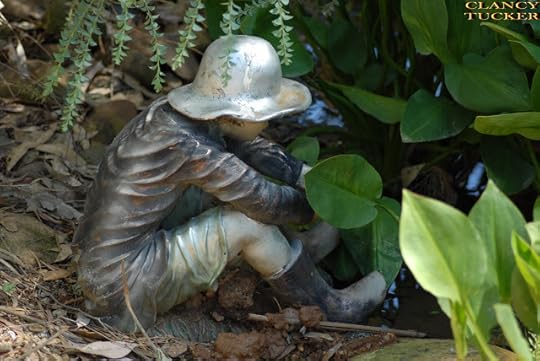
Published on February 14, 2017 14:04
February 13, 2017
14 February 2017 - UNCLE SAM
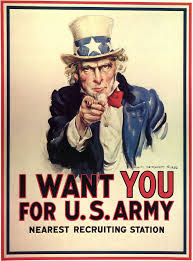
UNCLE SAM
G'day folks,
Uncle Sam is a common national personification of the American government or the United States in general that, according to legend, came into use during the War of 1812 and was supposedly named for Samuel Wilson. Its actual origin is obscure. However ...
The most popular theory concerns Samuel Wilson, a New York meatpacker who provided food to U.S. forces during the War of 1812. As the story goes, Wilson and Elbert Anderson, the contractor he supplied, stamped all their beef and pork barrels with the initials “E.A.-U.S.” The “U.S.” was shorthand for United States, but workers began joking that it stood for “Uncle Sam,” as Wilson was locally known. Before long, soldiers had helped bring the term into common use as a nickname for the United States.

The Sam Wilson story was first popularized in an 1830 article in the New York Gazette. It was later made a matter of public record in 1961, when Congress passed a resolution acknowledging Wilson as the “progenitor of America’s national symbol of ‘Uncle Sam.’” Nevertheless, many modern researchers doubt the tale’s veracity. Historian Donald R. Hickey has uncovered a reference to Uncle Sam in a U.S. Navy midshipman’s diary from 1810, which suggests that the term predated the War of 1812. In 1813, meanwhile, Wilson’s hometown newspaper wrote an article that referenced the term, but made no mention of his role in inspiring it. Instead, the story stated that the name was simply a playful take on the “U.S.” that was often emblazoned on military wagons and supplies.
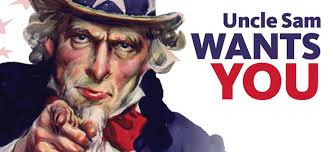
Whatever its origins, the nickname “Uncle Sam” became entrenched in the American vernacular in the years after the War of 1812. The first drawings of Uncle Sam followed in the 1830s, but his trademark look wasn’t popularized until the 1870s, when Harper’s Weekly cartoonist Thomas Nast began drawing him with a whiskered face, top hat and red-and-white striped pants.
The final step in the character’s transition into a national icon came courtesy of artist James Montgomery Flagg. In 1916, he used his own face as a model for an Uncle Sam cartoon in a periodical called Leslie’s Illustrated Weekly Newspaper. The image, which shows a goateed Uncle Sam pointing straight at the viewer, later appeared in a now-famous World War I recruitment poster featuring the tagline “I Want You For U.S. Army.”

Clancy's comment: Now ya know!
I'm ...

Published on February 13, 2017 12:38
February 12, 2017
13 February 2017 - TRUMAN CAPOTE
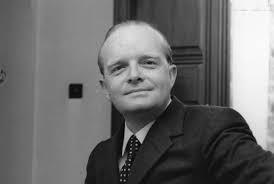
TRUMAN CAPOTE
G'day folks,
Welcome to the life of Truman Capote. Truman Garcia Capote was an American novelist, screenwriter, playwright, and actor, many of whose short stories, novels, plays, and nonfiction are recognized literary classics. Truman Capote was also a trailblazing writer of Southern descent known for the works Breakfast at Tiffany’s and In Cold Blood, among others.
Synopsis
Born in New Orleans, Louisiana, on September 30, 1924, Truman Capote went on to become a professional writer, making waves with his debut novel Other Voices, Other Rooms. His novella Breakfast at Tiffany’s (1958) was adapted into a popular film, and his book In Cold Blood (1966) was a pioneering form of narrative non-fiction. Capote spent his later years pursuing celebrity and struggled with drug addiction. He died in 1984 in Los Angeles, California.
Early Life Acclaimed writer Truman Capote was born Truman Streckfus Persons on September 30, 1924, in New Orleans, Louisiana. One of the 20th century's most well-known writers, Capote was as fascinating a character as those who appeared in his stories. His parents were an odd pair—a small-town girl named Lillie Mae and a charming schemer called Arch—and they largely neglected their son, often leaving him in the care of others. Capote spent much of his young life in the care of his mother's relatives in Monroeville, Alabama.
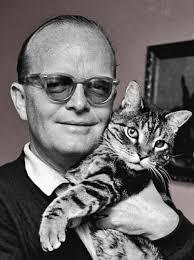
In Monroeville, Capote befriended a young Harper Lee. The two were opposites—Capote was a sensitive boy who was picked on by other kids for being a wimp, while Lee was a rough and tumble tomboy. Despite their differences, Lee found Capote to be a delight, calling him "a pocket Merlin" for his creative and inventive ways. Little did these playful pals know that they would both become famous writers one day.
While he had fun with his friends, Capote also had to struggle with his nightmarish family life. Seeing little of his mother and his father over the years, he often wrestled with feeling abandoned by them. One of the few times he caught their interest was during their divorce with each of them fighting for custody as a way to hurt the other. Capote finally did get to live with his mother full time in 1932, but this reunion did not turn out as he had hoped. He moved to New York City to live with her and his new stepfather, Joe Capote.
His once-doting mother was quite different once he started to encounter her on a daily basis. Lillie Mae—now calling herself Nina—could easily be cruel or kind to Truman, and he never knew what to expect from her. She often picked on him for his effeminate ways, and for not being like other boys. His stepfather seemed to be a more stable personality in the home, but Truman was not interested in his help or support at the time. Still, he was officially adopted by his stepfather, and his name was changed to Truman Garcia Capote in 1935.
A mediocre student, Capote did well in the courses that interested him and paid little attention in those that did not. He attended a private boys' school in Manhattan from 1933 to 1936, where he charmed some of his classmates. An unusual boy, Capote had a gift for telling stories and entertaining people. His mother wanted to make him more masculine, and thought that sending him to a military academy would be the answer. The 1936-1937 school year proved to be a disaster for Capote. The smallest in his class, he was often picked on by the other cadets.
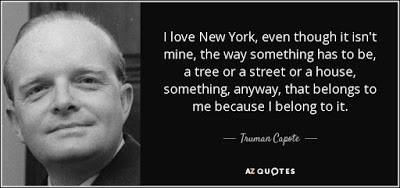
Returning to Manhattan, Capote started to attract attention for his work at school. Some of his teachers noted his promise as a writer. In 1939, the Capotes moved to Greenwich, Connecticut, where Truman enrolled at Greenwich High School. He stood out among his classmates with his ebullient personality. Over time, Capote developed a group of friends who would often go over to his house to smoke, drink, and dance in his room. He and his group would also go out to nearby clubs. Seeking adventure as well as an escape, Capote and his good friend Phoebe Pierce would also go into New York City and scheme their way into some of the most popular nightspots, including the Stork Club and Café Society.
While living in Greenwich, his mother’s drinking began to escalate, which made Capote’s home life even more unstable. Capote did not do well in school and had repeat the 12th grade at the Franklin School after he and his family returned to Manhattan in 1942. Instead of studying, Capote spent his nights at the clubs, making friends with Oona O'Neill, the daughter of playwright Eugene O'Neill and writer Agnes Boulton, and her friend heiress Gloria Vanderbilt, among others.
First Published Writings While still a teen, Capote got his first job working as a copyboy for The New Yorker magazine.During his time with the publication, Capote tried to get his stories published there with no success. He left The New Yorkerto write full time, and started the novel Summer Crossing, which he shelved to work on a novella entitled Other Voices, Other Rooms. Capote’s first successes were not his novels, but several short stories. In 1945, editor George Davis selected Capote's story "Miriam" about a strange little girl for publication in Mademoiselle. In addition to befriending Davis, Capote became close to his assistant Rita Smith, the sister of famous southern author Carson McCullers. She later introduced the two, and Capote and McCullers were friends for a time.
Capote's story in Mademoiselle attracted the attention of Harper's Bazaarfiction editor Mary Louise Aswell. The publication ran another dark and eerie story by Capote, "A Tree of Light" in its October 1945. These stories as well as "My Side of the Matter" and "Jug of Silver" helped launch Capote's career and gave him entrée into the New York literary world.
While struggling to work on his first novel, Capote received some assistance from Carson McCullers. She helped him get accepted at Yaddo, a famous artists' colony in New York State. Capote spent part of the summer of 1946 there, where he did some work on his novel and completed the short story, "The Headless Hawk," which was published by Mademoiselle that fall.
Capote also fell in love with Newton Arvin, a college professor and literary scholar. The bookish academic and the effervescent charmer made quite an interesting pair. Arvin, as with most of the others at Yaddo, was completely taken by Capote’s wit, manner, and appearance. That same year, Capote won the prestigious O. Henry Award for his short story "Miriam."
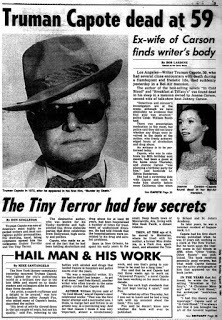
His first novel, Other Voices, Other Rooms, was published in 1948 to mixed reviews. In the work, a young boy is sent to live with his father after the death of his mother. His father's home is a decrepit old plantation. For a time the boy does not get to see his father and instead must deal with his stepmother, her cousin, and some other unusual characters that inhabit this desolate place. While some criticized elements of the story, such as its homosexual theme, many reviewers noted Capote's talents as a writer. The book sold well, especially for a first-time author.
In addition to receiving accolades and publicity, Capote found love in 1948. He met author Jack Dunphy at a party in 1948, and the two began what was to be a 35-year relationship. During the early years of their relationship, Capote and Dunphy traveled extensively. They spent time in Europe and other places where they both worked on their own projects.
Capote followed the success of Other Voices, Other Rooms with a collection of short stories, A Tree of Light, published in 1949. Not one to stay out of the public eye for long, his travel essays were put out in book form in 1950 as Local Color. His much-anticipated second novel, The Grass Harp, was released to in the fall of 1951. The fanciful tale explored an unlikely group of characters who take refuge from their troubles in a large tree. At the request of Broadway producer Saint Subber, Capote adapted his novel for the stage. The sets and costumes were designed by Capote's close friend, Cecil Beaton.
The comedy opened in March 1952, closing after 36 performances.In 1953, Capote landed some film work. He wrote some of Stazione Termini (later released as Indiscretion of an American Wife in the United States), which starred Jennifer Jones and Montgomery Clift. During the filming in Italy, Capote and Clift developed a friendship. After that project wrapped, Capote was soon working on the script for the John Huston-directed Beat the Devil, starring Humphrey Bogart, Jennifer Jones and Gina Lollobrigida, during its production. His best screenplay, however, was done years later when he adapted the Henry James novel The Turn of the Screw into The Innocents (1961).
Undeterred by his past failure, Capote adapted his story about a Haitian bordello, "House of Flowers," for the stage at Subber’s urging. The musical debuted on Broadway in 1954 with Pearl Bailey as its star and had Alvin Ailey and Diahann Carroll in the cast as well. Despite the best efforts of Capote and the show's fine performers, the musical failed to attract enough critical and commercial attention. It closed after 165 performances. That same year, Capote suffered a great personal loss when his mother died.
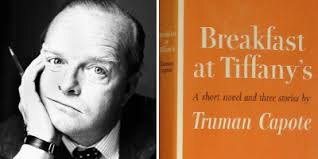
Always fascinated by the rich and social elite, Capote found himself a popular figure in such circles. He counted Gloria Guinness, Babe and Bill Paley (the founder of CBS Television), Jackie Kennedy and her sister Lee Radziwell, C. Z. Guest, and many others among his friends. Once an outsider, Capote was invited for cruises on their yachts and for stays on their estates. He loved gossip—both hearing and sharing it. In the late 1950s, Capote began discussing a novel based on this jet-set world, calling it Answered Prayers.In 1958, Capote scored another success with Breakfast at Tiffany's. He explored the life of a New York City party girl, Holly Golightly—who was a woman who depended on men to get by. With his usual style and panache, Capote had created a fascinating character within a well-crafted story. Three years later, the film version was released, starring Audrey Hepburn as Holly. Capote had wanted Marilyn Monroe in the lead role, and was disappointed with this adaptation.
In Cold Blood Capote's next big project started out as an article for The New Yorker. He set out with friend Harper Lee to write about the impact of the murder of four members of the Clutter family on their small Kansas farming community. The two traveled to Kansas to interview townspeople, friends and family of the deceased, and the investigators working to solve the crime. Truman, with his flamboyant personality and style, had a hard time initially getting himself into his subjects' good graces. Without using tape recorders, the two would write up their notes and observations at the end of each day and compare their findings.
During their time in Kansas, the Clutters' suspected killers, Richard Hickock and Perry Smith, were caught in Las Vegas and brought back to Kansas. Lee and Capote got a chance to interview the suspects not long after their return in January 1960. Soon after, Lee and Capote went back to New York. Capote started working on his article, which would evolve into the non-fiction masterpiece, In Cold Blood. He also corresponded with the accused killers, trying them to reveal more about themselves and the crime. In March 1960, Capote and Lee returned to Kansas for the murder trial.
While the two convicted and sentenced to death, their execution was staved off by a series of appeals. Hickock and Smith hoped that Capote would help them escape the hangman's noose and were upset to hear that the book's title was In Cold Blood, which indicated that the murders had been premeditated.Writing this non-fiction masterwork took a lot out of Capote. For years, he labored on it and still had to wait for the story to find its ending in the legal system. Hickock and Smith were finally executed on April 14, 1965, at the Kansas State Penitentiary. At their request, Capote traveled to Kansas to witness their deaths. He refused to see them the day before, but he visited with both Hickock and Smith shortly before their hangings.In Cold Blood became a huge hit, both critically and commercially. Capote used a number of techniques usually found in fiction to bring this true story to life for his readers. It was first serialized in The New Yorker in four issues with readers anxiously awaiting each gripping installment. When it was published as a book, In Cold Blood was an instant best-seller.
While In Cold Blood brought him acclaim and wealth, Capote was never the same after the project. Digging into such dark territory had taken a toll on him psychologically and physically. Known to drink, Capote began drinking more and started taking tranquilizers to soothe his frayed nerves. His substance abuse problems escalated over the coming years.
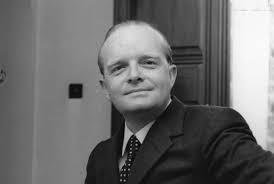
Despite his problems, Capote did, however, manage to pull off one of the biggest social events of the 20th century. Attracting his society friends, literary notables, and stars, his Black and White Ball garnered a huge amount of publicity. The event was held in the Grand Ballroom at the Plaza hotel on November 28, 1966 with publisher Katharine Graham as the guest of honor. In choosing a dress code, Capote decided that the men should dress in black tie attire while women could wear either a black or white dress. Everyone had to wear a mask. One of the evening's more memorable moments was when actress Lauren Bacall danced with director and choreographer Jerome Robbins.
Those society friends that flocked to the ball were in for a nasty shock several years later. Considered one of the notorious instances of biting the hand that feeds, Capote had a chapter from Answered Prayers published in Esquiremagazine in 1976. That chapter, "La Cote Basque, 1965," aired a lot of his society friends’ secrets as thinly veiled fiction. Many of his friends, hurt by his betrayal, turned their back on him. He claimed to be surprised by their reactions and was hurt by their rejection. By the late 1970s, Capote had moved on to the party scene at the famous club Studio 54 where he hung out with the likes of Andy Warhol, Bianca Jagger, and Liza Minnelli.
By this time, Capote's relationship with Jack Dunphy was becoming strained. Dunphy wanted Capote to stop drinking and taking drugs, which—despite numerous trips to rehabilitation centers over the years—Capote seemed unable to do. While no longer physically intimate, the two remained close, spending time together at their neighboring homes in Sagaponack, Long Island. Capote also had other relationships with younger men, which did little to improve his emotional and psychological state.
Published in 1980, Capote's last major work, Music for Chameleons, was a collection of non-fiction and fictional pieces, including the novella Handcarved Coffins. The collection did well, but Capote was clearly in decline, battling his addictions and physical health problems.
In the final year of his life, Capote had two bad falls, another failed stint in rehab, and a stay in a Long Island hospital for an overdose. Capote traveled to California to stay with old friend Joanne Carson, the ex-wife of Johnny Carson. He died at her Los Angeles home on August 25, 1984.
After Capote's death, Joanne Carson received some of her beloved friend's ashes. When Carson passed away in 2015, Capote's ashes became part of her estate, and in what some media observers saw as a fitting end for the headline-grabbing author, his remains were sold at auction in Los Angeles for $43,750 in September 2016. An anonymous buyer purchased Capote's remains which were contained in a wooden Japanese box. “With some celebrities this wouldn’t be tasteful, but I know 100 percent he would love it,” Darren Julien, president of Julien’s Auctions, told The Guardian . “He loved to create press opportunities and to read his name in the paper. I think he would love it that he’s still grabbing headlines today.”

Clancy's comment: Another interesting life, but one beset with problems. I loved his movies.
I'm ...


Published on February 12, 2017 12:07
February 11, 2017
12 February 2017 - MOVING PICTURES
[image error]
MOVING PICTURES
G'day folks,
Welcome to another batch of wonderful moving pictures. As always, cats feature big time.
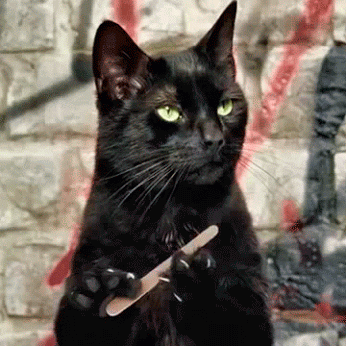
[image error]

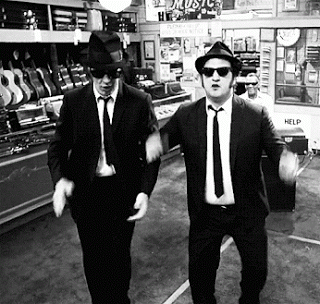
[image error]
[image error]

[image error]



[image error]

[image error]
[image error]



Clancy's comment: There ya go. Yep, heaps of cats.
I'm ...


MOVING PICTURES
G'day folks,
Welcome to another batch of wonderful moving pictures. As always, cats feature big time.

[image error]


[image error]
[image error]

[image error]



[image error]

[image error]
[image error]



Clancy's comment: There ya go. Yep, heaps of cats.
I'm ...


Published on February 11, 2017 13:02



